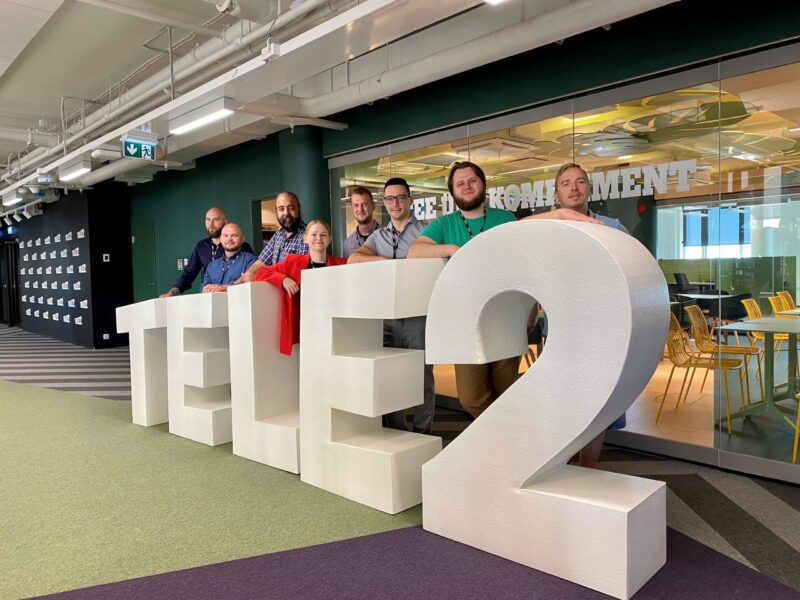With certain caution among traditional funding sources in 2020, we saw an increased interest among startups in crowdfunding and digital fundraising. Last month we organised a panel on Crowdfunding from the platform’s perspective talking with Seedrs, Funderbeam and Crowdfundme about how they see current trends and also overall success and failure behind startup crowdfunding (you can read the highlights of this discussion on our blog and rewatch the panel discussion here). Recently we held another panel to look into the startup perspective of equity crowdfunding and checked how this experience has been for Marek Pärtel, the CEO of EstateGuru, Raffaele Giaquinto, the COO of Lifeed, and Martin Sookael, the CEO of CostPocket.
CostPocket, an expense streamlining app, ran their campaign from February to May of this year and had a target of 180 000€, which they raised within just one day on Funderbeam. Lifeed, a digital training platform, ran their campaign on MamaCrowd from February until April, and raised 450 000€ from over a hundred shareholders. EstateGuru, a marketplace for property loans, started their crowdfunding campaign with the target of 350 000€ in April and after a month of running it, had managed to raise almost a million euros on Seedrs.
Reasons to crowdfund
It goes without saying that every startup has their own reasons as to why they choose to crowdfund. For some, it’s because they’re too small to stand out to VCs, crowdfunding helps the startup gather together their target amount – just with the help of multiple investors. Others might see it as a way to diversify their shareholder base. For some it might even be a way to try out the highs and lows of being a public company (as most platforms provide also secondary market), or to expand investor and customer base in a particular geography or just ensure a smoother and more transparent way of reporting and managing relationships with multiple investors.
For Lifeed, it was a step towards diversifying their shareholder base and raising capital in the seed stage. EstateGuru also wanted to give smaller investors an opportunity to support them. They also used it as a marketing tool in order to showcase their brand and attract some clients to their own platform.
CostPocket liked crowdfunding for its clear syndicates – all investors would be on equal footing and nobody could come with special demands. Martin also noted that because they’re good with reporting, they appreciated the opportunity to operate as a public company through the Funderbeam platform.
“Overall, digital crowdfunding is practically the same as regular fundraising – you still have to approach all the investors yourself.”
Martin Sookael, CEO of CostPocket
How to choose the right platform?
We suggest you start with analysing the platforms’ compatibility with your main goal besides investment. Are you looking to expand to a new market or trying to promote your brand domestically? How big is the investor base? What’s the platform’s geographic scope? How much are they investing annually? How successful have other similar campaigns been on the platform?
“Look where your vertical is strong, similarly to choosing an accelerator. How big is the investor base? How big of a volume they’re funding annually? What kind of investors are there? What other similar products are crowdfunding on the platform? And the timing: if there’s a similar campaign launching, try to time yours at the same time to catch their investors as well.”
Marek Pärtel, CEO of EstateGuru
Another aspect that’s worth consideration is local trends. Lifeed, an Italian startup, took a horizontal approach, instead of looking at verticals like the Estonian startups did. They considered the potential audience and scouted three platforms with generic solutions in the Italian market. That led them to pick the platform which would guarantee the overall biggest potential audience and return.
4 Key learnings from running the campaigns
1. Give maximum push already before the launch
Most crowdfunding platforms would advise you or even oblige you to find a lead investor or somehow guarantee an initial commitment before launching the campaign. And even if there is no such strict rule, this is of your own interest, when crowdfunding. Investors are people – they want to be part of a success and they also suffer from FOMO, so if your campaign is already on the move with significant initial traction, ideally some reputable lead investor, then you are way more likely to succeed.
For example, Seedrs’ platform allowed EstateGuru to send a private link to all their existing investors to raise a good foundation before going public with their campaign. Marek and other co-founders worked through their LinkedIn pages sending the private links to already existing and potential investors. He urges all founders to take their time in this step. He’s sure that had he taken a more personal approach in that stage, their campaign could’ve been even more successful.
“I advise you to take the time to call your closest 50-100 people who could potentially invest in your company and talk to them more directly. If I could go back in time, that’s what I would’ve done differently. It’s not enough to some to just send a link – they would like to talk to the founders more personally. Maybe a lunch, dinner, or just a longer phone call.”
Marek Pärtel, CEO of EstateGuru
2. Stay active throughout the entirety of the campaign.
It is easier said than done, especially if your campaign lasts for 3months or longer and there are daily questions coming in from potential investors. Look at the campaign as a marathon that you have to run and ensure that you and your team have the bandwidth to support all the activity and communication to foster the crowdfunding.
A strong start gave EstateGuru good momentum, which they then had to keep alive by actively responding to all questions. They even involved four other team members in the process, just so they could answer all questions by the next day.
“Every euro is hard work. It’s not like someone just gives you money. It’s important that you answer all questions properly because even though just one person asks, many thousand read your answers. You’re building credibility with your Q&A. It’s all about transparency. ”
Marek Pärtel, CEO of EstateGuru
3. Evaluate the length of your campaign.
Average campaign length differs from a platform to platform and from a startup to startup. While shorter campaigns (on average 1 month) seem to be a trend in Estonia, in Italy – it is unlikely to see a campaign shorter than 3 months. But no matter, how stretched the campaign is, most of them follow a similar pattern in investment activity and corresponding startups energy supplies: everyone starts off from the top of the mountain with lots of excitement, energy, movement (and for most successful campaigns there is a significant traction in first days, especially if you’ve done your homework), then approaches a valley of silence and at the last days of the campaign sees a rise in activity again.
First, we advise to be realistic and just embrace the silence in the middle of the campaign, that is normal. However, we’d also suggest to really think through the optimal length of the campaign and the corresponding activities – it’s straining to keep your energy up for multiple months in a row.
“In the third month, you risk not replying the questions properly, this could have a more negative effect than the opportunity in terms of investment.”
Raffaele Giaquinto, COO of Lifeed
4. Invest in marketing activities
One of typical mistakes in crowdfunding that both platform owners and startups mentioned was expecting to simply have money rolling in just because the campaign is launched on a platform that has an investor base. You already saw advice to activate your own network prior to launch and make sure that you keep informing and engaging investors on the platform itself. However, that might not be sufficient and you should also look into additional marketing activities to support your campaign, attract potentially new investors or convince the existing, but not decisive ones.
Some crowdfunding platforms provide additional services in external PR and marketing, but of course you can also take it up yourselves. CostPocket, for example, had put together a proper social media plan in order to raise awareness of their campaign before it had even gone live, which helped them hit their goal in less than a day.
The process of crowdfunding is definitely not a one-size-fits-all approach. There’s just as many ways to succeed as there is to fail and not all startups should even do it. Just think it through, plan it out and give it maximum effort if you do decide to go down that route! And if you’re not sure if you should go down it, why not watch the full panel with 3 awesome founders sharing their experiences!



